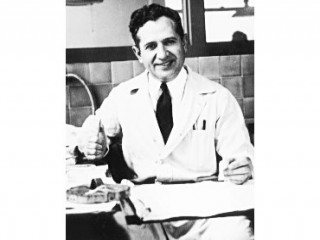
Albert Claude biography
Date of birth : 1899-08-23
Date of death : 1983-05-22
Birthplace : Longlier, Belgium
Nationality : Belgian
Category : Science and Technology
Last modified : 2011-08-19
Credited as : Scientist, microstructure of the cell,
1 votes so far
Albert Claude laid the groundwork for modern cell biology, with his 1945 publication of the first diagram of cell structure. He was born and buried in Belgium, but also obtained dual citizenship in America. In World War I, while in his late teens, Claude served with British Intelligence, and was twice imprisoned. He was awarded the Inter-Allied Medal for his work, and after the war, though he lacked a high school diploma, he was admitted at the University of Liège under a special program designed for war veterans.
After obtaining his medical degree, he used mechanisms from meat grinders and a sieve to construct a crude but high-speed centrifuge, and pioneered ultracentrifugation, a technique for breaking and spinning infected cells to isolate their agents. Prior to Claude's research, cell interiors were generally thought to be an chaotic mass of substances, but his research showed that cell interiors are actually a well-organized area. He discovered the endoplasmic reticulum (derived from the Latin word for "fishnet", this is a membranous network within cells), and he was among the first scientists to use an electron microscope for cellular study. He was awarded the Nobel Prize for Medicine in 1974. His $125,000 Nobel payment was shared with Christian de Duve and Claude's star pupil, George E. Palade.
















